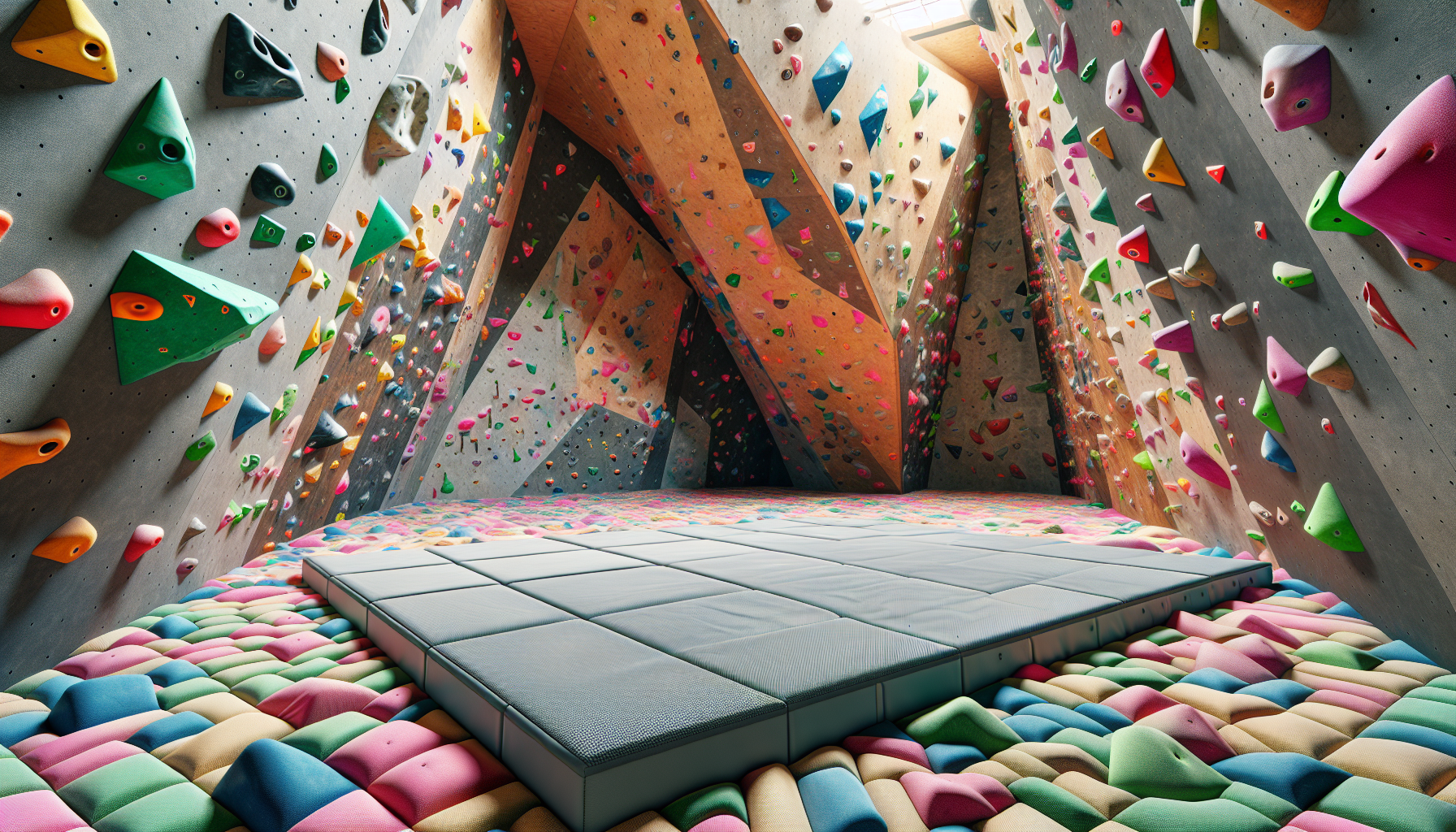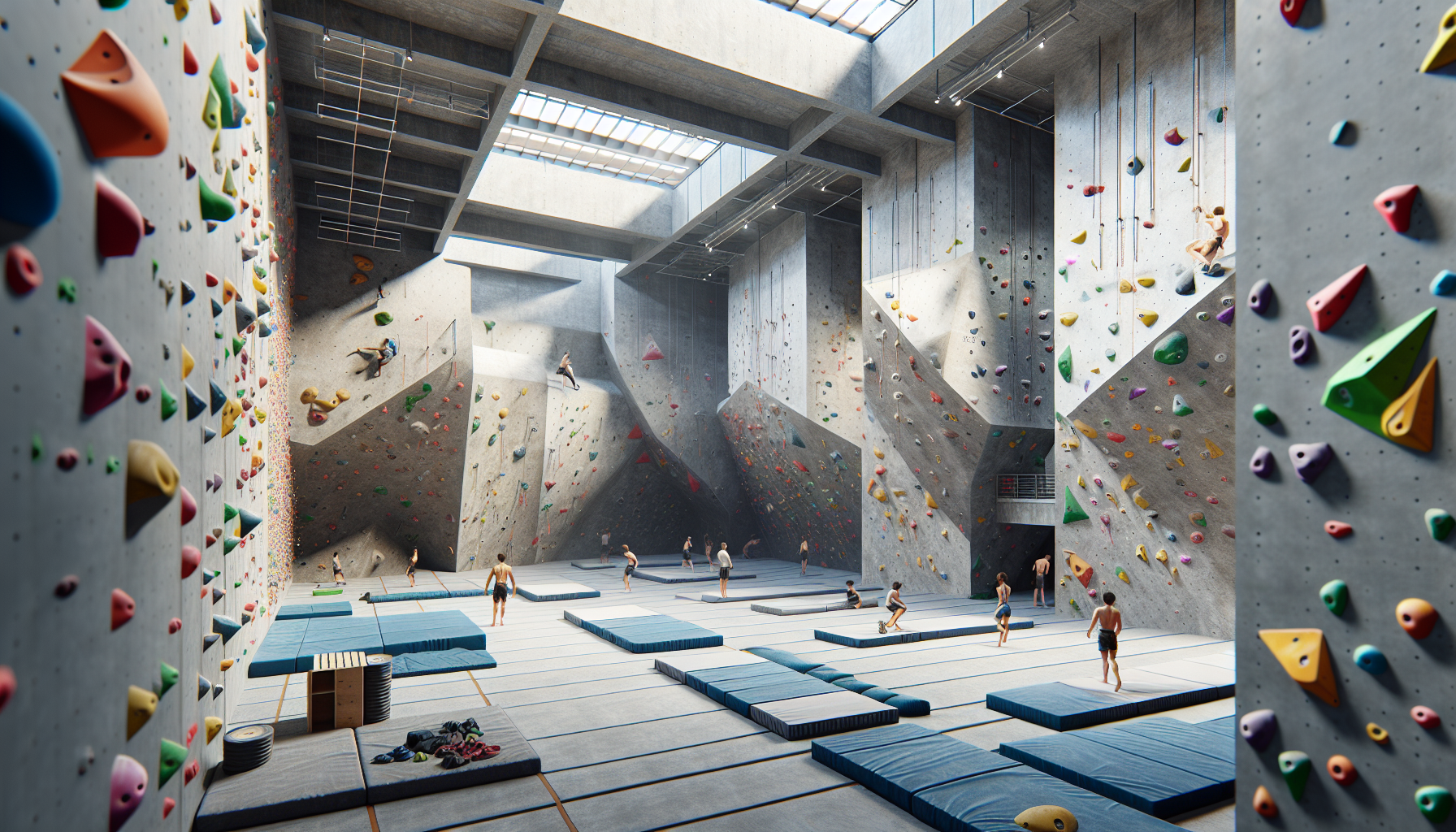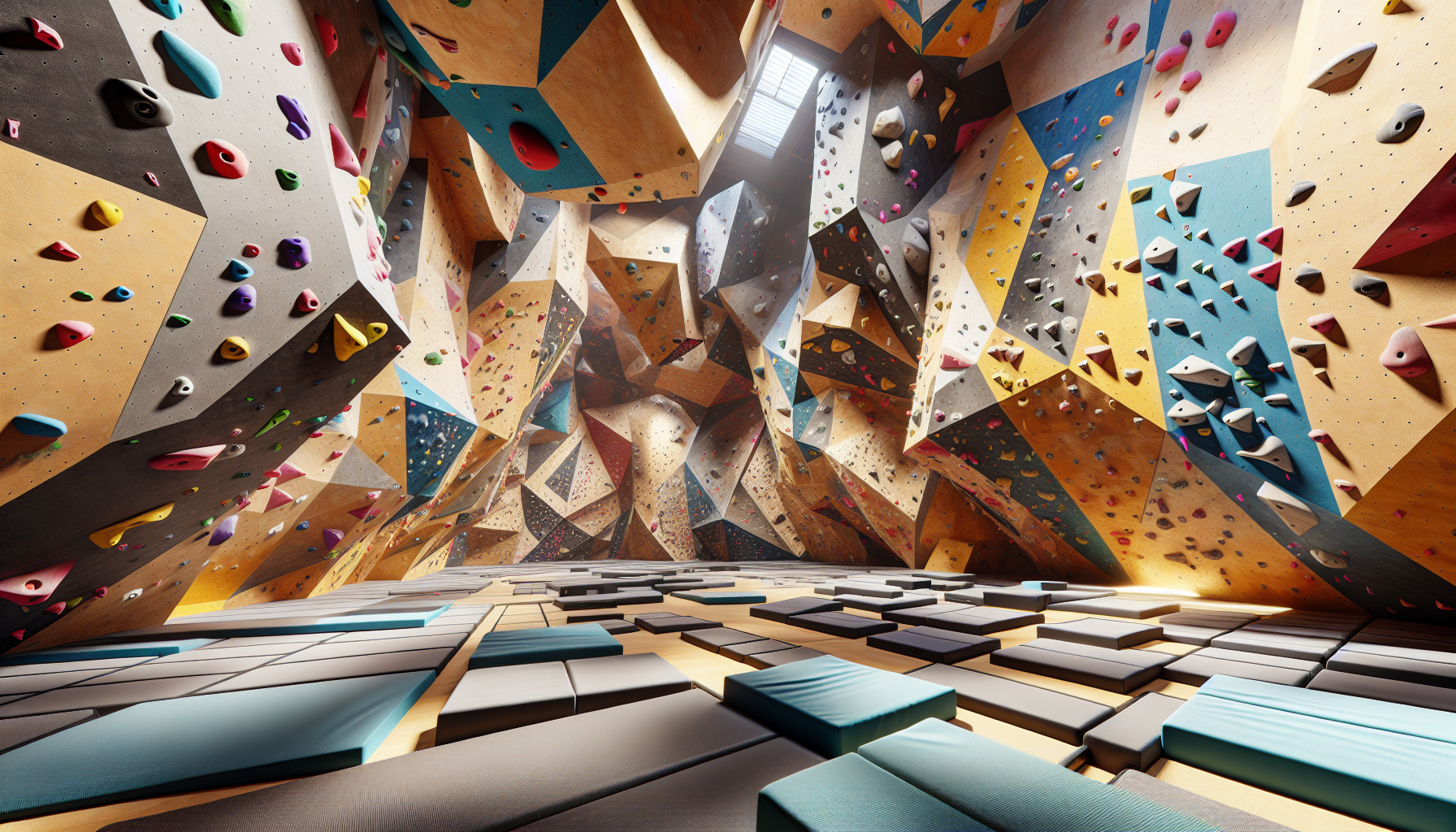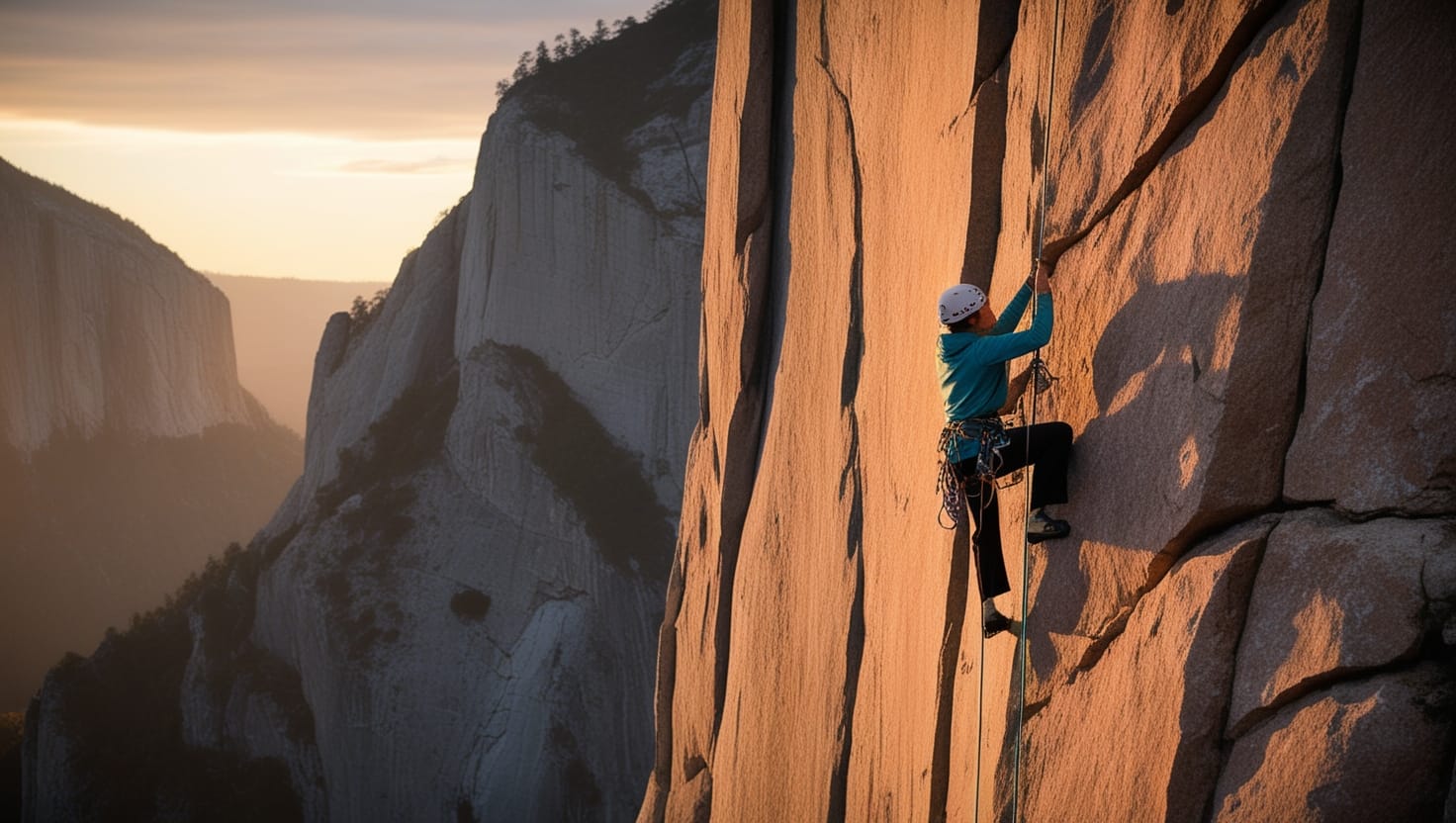
Embarking on a journey into the world of climbing can be both thrilling and daunting. Many newcomers find themselves attracted to this dynamic activity, where skill and determination play crucial roles.
With no ropes securing the climber, reliance on safety gear like crash pads becomes essential, especially for those starting out.
Climbing gyms offer a nurturing environment, featuring various walls designed to suit different abilities, which helps perfect technique and footwork.
Routes are graded, providing a structured way to measure progress and build confidence over time. A solid investment in climbing shoes can greatly improve your experience, delivering the necessary grip and support.
Always prioritize safety as you prepare for every ascent.
Getting Started With Indoor Bouldering
Embarking on a climbing journey in a controlled environment can be both thrilling and rewarding. It presents a unique opportunity for novices to build strength and enhance their endurance while exploring various techniques.
Using chalk is essential for grip and helps mitigate any potential fatigue during climbs.
Selecting appropriate gear, particularly climbing shoes, can significantly impact your performance and comfort.
Focus on mastering fundamental skills such as footwork and body positioning to avoid strain and improve your technique. Remember to warm up properly to prevent injury and cool down after each session to aid your recovery.
When choosing a gym, seek facilities that foster a supportive community and offer well-designed spaces suitable for bouldering for beginners. Finding the right location can greatly enhance your experience and progression as a climber. Starting bouldering can be challenging for a beginner climber, but with the right gear, proper use of chalk, and a focus on building endurance while avoiding tendon strain from fatigue, anyone can enjoy the sport at a gym.

Essential Gear For New Climbers
Equipping yourself properly is vital for anyone venturing into the outdoors. Starting with essential items makes the journey safer and more enjoyable.
Footwear, like climbing shoes, plays a significant role in enhancing your stability and performance on varying surfaces.
For those new to the sport, it’s important to strike a balance between comfort fit and tight fit options based on your needs.
A chalk bag can be a game-changer for maintaining a secure grip while you climb, and several budget-friendly options are available to suit every pocket.
Engaging in indoor bouldering or the outdoors demands safety gear, with crash pads being indispensable. These pads minimize the risk of injury during falls, ensuring peace of mind, and many brands cater specifically to newcomers.
The right gear can significantly impact your overall experience, helping you focus on mastering bouldering tips and techniques as you explore this exhilarating activity
Outdoor Climbing Gear
- Proper footwear improves stability and performance on challenging surfaces.
- Using a chalk bag enhances grip, making climbs safer and more efficient.
- Crash pads are essential for reducing injury risk during falls in bouldering.
- Affordable gear options are available to accommodate beginners and experienced climbers alike.
Understanding Bouldering Techniques
Climbing offers a thrilling way to challenge both the mind and body, particularly when navigating complex routes. Mastering essential techniques can significantly impact a climber’s ability to conquer various problems safely and effectively.
Footwork plays a pivotal role; precise placement enhances balance and helps conserve energy during climbs.
Techniques such as edging and smearing are particularly useful for optimizing grip on limited holds while tackling bouldering routes.
Body positioning remains crucial for successful ascents.
Keeping the hips close to the wall increases stability and reach, making it easier to maneuver through difficult sections. Enhancing core engagement can greatly improve control when facing challenging bouldering problems.
Grip techniques will differ depending on the type of hold encountered.
Effectively using grips like open hand, crimp, or pinch is vital for maintaining strength and improving performance. Understanding which grip to use for different holds allows climbers to maximize their effectiveness.
Movement and flow are integral components of energy conservation during climbs.
Different styles of movement—dynamic and static—serve distinct purposes, helping athletes adapt to various climbing scenarios.
Problem-solving skills are necessary for analyzing routes and developing strategies before attempting climbs.
Visualization plays a crucial role in executing moves efficiently.
Lastly, safety techniques should never be overlooked; proper spotting and using mats help prevent injuries, particularly when bouldering indoors
How To Improve Your Footwork
Mastering movement on vertical surfaces can greatly elevate your overall climbing experience. Proper foot placement is key to achieving optimal body mechanics, which directly influences your efficiency during climbs.
When you emphasize precision, you minimize wasted energy, allowing for greater endurance on the wall and improving your performance in various scenarios.
Start by recognizing the significance of positioning before each move, as it greatly contributes to balance and control.
Weight distribution is vital for maintaining stability, so integrating specific drills into your routine can remarkably enhance your skills.
Consider incorporating the Silent Feet Drill into your practice; this exercise emphasizes quiet placements and elevates your awareness of where your feet land on the holds.
Another useful technique is practicing Foot-Placement Patterns, which helps you rehearse specific movements while climbing. This approach, combined with bouldering, requires heightened attention to foot precision, leading to exceptional muscle memory given the short walls and rest opportunities.
Include various climbing surfaces in your practice to challenge your footwork accuracy.
Frequent breaks to assess and modify foot placements are crucial for improvement.
Avoid becoming overly reliant on upper body strength, as this habit can cause neglect in developing effective foot techniques.
Documenting your progress in foot placement skills through journaling will help maintain your motivation and provide insight into your ongoing adaptations. Setting benchmarks over time can lead to meaningful enhancements and further integrate the many fitness-related benefits that might arise from a focused approach.
Climbing Foot Techniques
- Proper foot placement can significantly improve climbing efficiency and reduce energy expenditure.
- Drills like the Silent Feet Drill enhance awareness of foot positioning, leading to more controlled climbing.
- Practicing Foot-Placement Patterns develops muscle memory, crucial for mastering movements on vertical surfaces.
- Regularly assessing foot placements can lead to notable improvements and help avoid over-reliance on upper body strength.
Best Practices For Injury Prevention
Maintaining optimal physical condition while engaging in this sport can profoundly impact your overall performance and longevity. Many climbers face common injuries, such as finger strains and shoulder issues, often resulting from improper techniques or overexertion.
Recognizing these pain points can significantly improve your ability to stay injury-free.
Before you start your climbing session at any bouldering gym, it’s crucial to consider effective warm-up routines.
These important exercises prepare your muscles and joints, ultimately reducing the risk of strain.
Incorporating dynamic stretching into your warm-up keeps your body agile and ready for challenging boulder problems, while a fit instructor Jasmine will walk you through these routines to maximize your fitness-related benefits.
It’s equally important to listen to your body during climbs. Spotting early signs of fatigue is vital, and taking necessary breaks can make a big difference.
Integrating essential recovery strategies into your climbing routine not only enhances overall performance but also helps you remain active in the sport of bouldering for longer periods.
Tips For Building Endurance
Developing lasting physical capabilities is crucial for those who seek to conquer challenging routes and endure longer climbs. Incorporating effective training methods can significantly elevate your performance and help you become a better climber.
One highly recommended approach is interval training, which allows climbers to alternate between high and moderate intensity.
This method not only helps improve your climbing techniques but also pushes your limits, leading to better results.
To further enhance your stamina, consider specific climbing drills focused on increasing endurance. Power-endurance workouts, for instance, involve climbing at near-max effort with brief rests that can effectively build resistance.
Limiting bouldering sessions encourages climbers to set ambitious goals and work towards surpassing their boundaries. Incorporating traversing drills also allows you to maximize movement efficiency while strategically placing your feet to maintain energy usage.
It’s essential to remember that relaxation and recovery are fundamental components in the journey toward building stamina
Navigating Bouldering Problems
Mastering the art of climbing demands a strategic approach that considers each ascent as a unique puzzle waiting to be solved. To effectively interpret these challenges, it’s crucial to start by analyzing the sequence of holds and understanding the necessary movements involved.
Climbing gyms typically utilize color-coded routes, which not only indicate difficulty levels but also instruct climbers on various styles and techniques.
Familiarity with various types of holds, like jugs and crimps, can significantly enhance your climbing experience.
Selecting the right foothold based on your body’s position ensures optimal balance and grip strength.
Regular technique practice is vital, as it reduces the lot of energy expended during climbs.
Visualizing each move before taking action plays a pivotal role in problem-solving. By breaking down the ascent into manageable sections and considering alternative routes, you can effectively navigate climbs and optimize your performance, ultimately leading to successful mastery on the rock surfaces
Maximizing Your Climbing Sessions
Enhancing your performance on the wall starts with a thoughtful approach to each session. Engaging your core is essential; begin with effective warm-up techniques to prepare your body for the challenges you will face.
Simple stretches and mobility exercises can help you avoid injuries and improve your agility.
It’s also crucial to outline specific session goals to boost your productivity.
Select problems that suit your skill level, such as v0 for beginners or more demanding challenges for advanced climbers. During your climbs, cultivate mindfulness to heighten your focus on each move, particularly when searching for the next hold.
Recovery plays a vital role in your progress; make sure to hydrate, eat well, and schedule rest days to maintain peak performance and allow your body to recuperate. Tracking your progress through feedback from peers and utilizing resources like a guidebook can help you refine your technique and stay motivated.
Climbing Performance
- Engaging the core improves stability and power during climbs.
- Dynamic stretching can enhance flexibility and reduce injury risk.
- Setting measurable goals can significantly boost motivation and focus.
- Proper hydration and nutrition are crucial for maintaining energy levels during climbing sessions.





